Around here we’re not shy about laying into the Emmy-winning series Game of Thrones, especially as it’s now reaching the point of self-parody. For this reason, we’re adamant about #StoppingTheConflation between the show and the books it’s “based on,” George R.R. Martin’s saga A Song of Ice and Fire. But hey, that’s right…remember those books? The ones that we tend to enjoy a whole lot with its complex characters, thought-provoking messaging, and thorough world-building?
Let’s just take a bit of time to dive into that last bit and refresh ourselves on one small aspect of what makes Westeros great: the houses. While much talk is made of the “great houses” and their histories and current circumstances, we want instead to take a closer look at some of the most [in]famous secondary houses. The following houses have either shaped historical events or have significantly impacted the current events of Westeros.
House Hightower
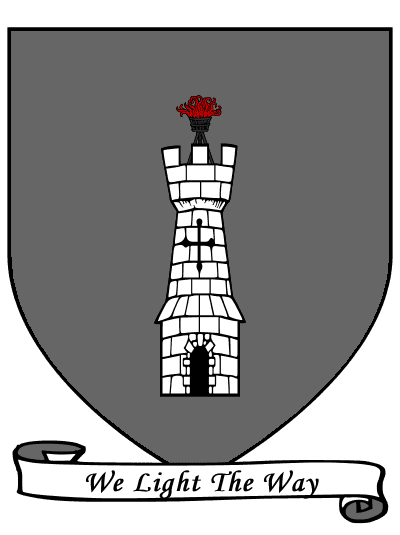 There cannot be a list of powerful secondary houses in Westeros without the Hightowers. An ancient house, not only do they command the second largest city in Westeros (Oldtown), but they’re also the most powerful bannermen in the Reach under the Tyrells. Commanding the Hightower, the wealth of Oldtown, hosting the Citadel, and the Starry Sept are impressive enough, but this doesn’t begin to scratch the surface of the political powerful this family can wield.
There cannot be a list of powerful secondary houses in Westeros without the Hightowers. An ancient house, not only do they command the second largest city in Westeros (Oldtown), but they’re also the most powerful bannermen in the Reach under the Tyrells. Commanding the Hightower, the wealth of Oldtown, hosting the Citadel, and the Starry Sept are impressive enough, but this doesn’t begin to scratch the surface of the political powerful this family can wield.
Look no further than the Dance of Dragons. When Lady Alicent Hightower married King Viserys I Targaryen, she drew her family into a powder keg over a generation in the making. Having declared his only child, Queen Rhaenyra, as his heir, it was only a matter of time before enmity developed between daughter and step-mother. And when Lady Alicent gave birth to four children, three sons, and one daughter, well…
Through the political machinations of Lady Alicent and her father, Ser Otto (the Hand of the King), King Viserys’ I death marked the beginning of one of the bloodiest civil wars in Westerosi history. The Hightowers, also known as the Greens, fought for Lady Alicent’s children to sit the Iron Throne, while Queen Rhaenyra and her supporters, the Blacks, fought to keep her claim as heir.
When the dust settled, House Targaryen was decimated, and nearly all of its dragons dead. (The last would die out in King Aegon III Targaryen’s reign.) All of Lady Alicent’s children were killed, and her three grandchildren were murdered. Ser Otto Hightower was executed by Queen Rhaenyra, and Lady Alicent’s brother, Ser Gwayne, was slain by his own commander. Lord Ormund Hightower and his cousin, Ser Brynden, also perished in the war, both slain by Lord Roderick Dustin in the Battle of Tumbleton. Lady Alicent remained a hostage to King Aegon III for the rest of her days, as Queen Rhaenyra’s children with Prince Daemon Targaryen ultimately inherited the throne, even if the Dance had started the beginning of the end for their dynasty.
The Hightowers left their thumbprint on Westeros, arguably, more than any other house save for the Targaryens or the Baratheons. Without the Dance, the dragons would have lived, and with the dragons, well, House Targaryen might still be sitting the Iron Throne to this day.
House Frey
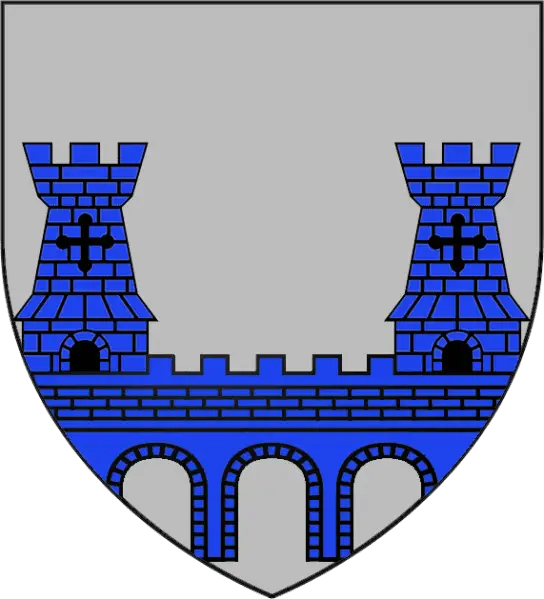 There once was a time when House Frey of the Crossing was known for the power and gallantry of their Lord, Forrest Frey. Once a suitor for Queen Rhaenyra, he joined the Blacks and died while valiantly fighting the Greens in the Battle by the Lakeshore.
There once was a time when House Frey of the Crossing was known for the power and gallantry of their Lord, Forrest Frey. Once a suitor for Queen Rhaenyra, he joined the Blacks and died while valiantly fighting the Greens in the Battle by the Lakeshore.
Oh, how times have changed. Under their current Lord, the ancient Lord Walder Frey, the house has exploded in population and wealth as Lord Walder’s many children have married and had children and grandchildren during his rule. They’ve also developed a less than honorable reputation as greedy, reaching, and fair-weathered. Indeed, Lord Walder partially earned his moniker as “the Late Lord” by waiting until a Baratheon victory was certain before answering his overlord, Lord Hoster Tully’s, summons to battle in Robert’s Rebellion.
After the Red Wedding, the house may be permanently stained for their treachery, and for breaking the sacred rule of Guest Right. The ramifications of breaking that code are far reaching, as previously it was assured that once granted this right, lords would be guaranteed safe lodging/passage through another lord’s lands, even in times of war. This code of conduct has been shattered, and now many a lord and lady no longer have faith in the rules of warfare.
Beyond this, in-fighting reigns supreme with Lord Walder’s progeny, and the house is now reviled in most of Westeros. Their forces are being stretched thin between holding the Riverlands and marching North to reinforce Bolton rule. Thanks to their betrayal of House Stark, and their butchering of many Northern lords and heirs, the Freys have particularly earned the enmity of the North (especially House Manderly), who will gladly remind the rest of Westeros of their people’s unofficial motto: The North Remembers. On top of this Lady Stoneheart is wreaking havoc in the Riverlands, butchering any Frey men she and the Brotherhood Without Banners come across.
While they may have secured themselves power in the short run, the actions of Lord Walder and his sons could spell doom for their house.
House Reyne
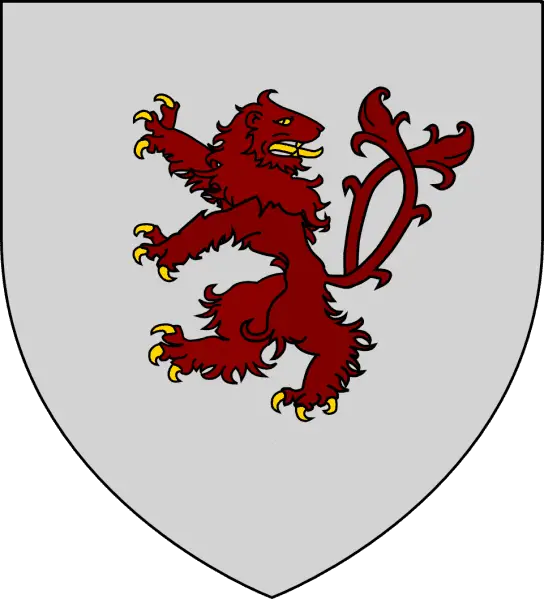 Once the second most powerful house in the Westerlands, the Reynes of Castamere now exists only as a memory and an example of Lord Tywin Lannister’s wrath.
Once the second most powerful house in the Westerlands, the Reynes of Castamere now exists only as a memory and an example of Lord Tywin Lannister’s wrath.
Descendants of the First Men, the Reynes became part of the Kingdom of the Rock under King Loreon I Lannister thanks to a marriage alliance. Largely loyal bannermen, they joined the Greens in the Dance of Dragons. However, things began to change as their wealth and power continued to grow.
Lord Robb Reyne sided with Daemon I Blackfyre during the First Blackfyre Rebellion. Once the initial Blackfyre Rebellions were settled, then Lord Robert Reyne made a power play, betrothing his daughter Ellyn to the heir of Casterly Rock, Tywald Lannister. When Lord Tywald died in the Peake Uprising during King Maekar I Targaryen’s reign, the Reynes then made a move to shift Ellyn’s betrothal to Tywald’s twin brother, Lord Tion. Lady Ellyn held court at the Rock and bestowed many favors and appointments on her family.
Then, during the Fourth Blackfyre Rebellion, Lord Tion was killed. When Lady Ellyn made advances on the new heir, Tytos Lannister, ruling Lord Gerold Lannister had her married out to Lord Walderan Tarbeck and effectively removed her from the court.
Unfortunately, Lord Tytos proved to be a weak-willed and easily manipulated Lord of the Westerlands, and the Reynes and Tarbecks took advantage of his submissive will, taking out loans, lands, and other titles. His son and heir, Lord Tywin Lannister, however, was watching.
Once he was old enough, Lord Twyin seized control and demanded repayment of the loans his father had granted. The Reynes and Tarbecks, used to the paper lion in Lord Tytos laughed off Lord Tywin’s threats and refused. This was their fatal mistake. Lord Tywin took the armies of the Westerlands and wiped both houses off the face of Westeros. So complete was his annihilation of the Reynes, that he had the “Rains of Castamere” commissioned, and used it as an intimidation tactic.
The destruction of the Reynes and Tarbecks set Lord Tywin Lannister as a true power player in Westeros, helping lead to his appointment as Hand of the King under King Aerys II Targaryen, and his total domination over the Westerlands.
House Yronwood
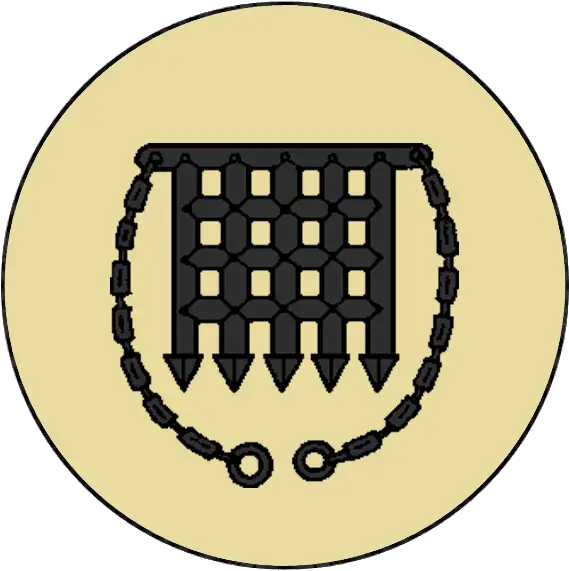 The most powerful house in Dorne after the Martells, House Yronwood of Yronwood has guarded the Boneway for centuries.
The most powerful house in Dorne after the Martells, House Yronwood of Yronwood has guarded the Boneway for centuries.
This family of Dornishmen once ruled over half of Dorne. In fact, even today their lands are larger than their overlords, the Martells. With fertile lands, natural resources, and control of one of the primary entryways to Dorne, the Yronwoods command incredible wealth.
Historically, the Yronwood kings clashed with the Storm Kings of the Stormlands, meeting the Durrandons in battle on numerous occasions. Once the Rhoynar landed and Princess Nymeria wed Lord Mors Martell, the Yronwoods fought against the Martells in Nymeria’s War, which lasted 11 years before King Yorick V Yronwood eventually bent the knee and was then sent to the Wall in golden chains.
While bannermen of House Martell, the Yronwoods have always maintained an uneasy alliance. They supported Aegor Bittersteel in three of the five Blackfyre Rebellions, fighting against House Martell. Later, Prince Oberyn Martell would kill Lord Edgar Yronwood in a duel over a paramour, prompting him to flee to the Free Cities at the age of 16. Prince Doran later gave his oldest son, Prince Quentyn Martell, to Lord Anders Yronwood to foster to repay the blood debt Prince Oberyn owed.
Recently, Lord Cletus Yronwood and Ser Archibald Yronwood joined Prince Quentyn on his journey to Slaver’s Bay to petition for Queen Daenerys Targaryen’s hand. The trip proved to be disastrous, with Cletus and Quentyn both dying. It’s anyone’s guess what the current Bloodroyal will do once the news of his son’s death reaches Yronwood.
House Royce
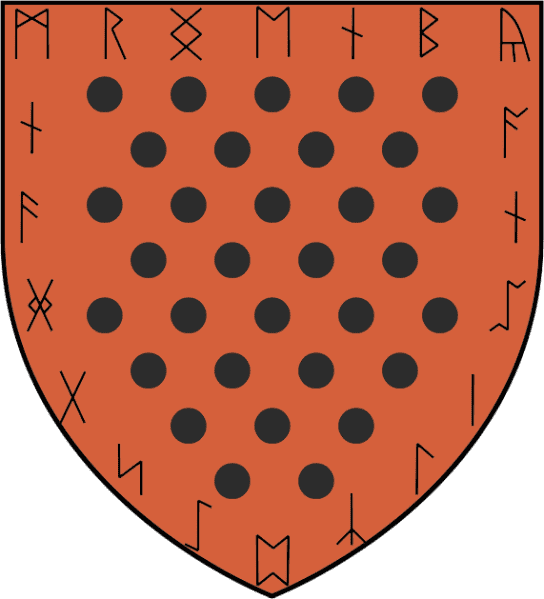 House Royce of Runestone trace their lineage back to the Age of Heroes and the First Men. Once the Bronze Kings, and then the High King of the Vale, the Fingers, and the Mountains of the Moon, this ancient house eventually yielded to the Andal conquerors, particularly Artos Arryn of the House Arryn, after their last king, Robar Royce, died in the Battle of the Seven Stars.
House Royce of Runestone trace their lineage back to the Age of Heroes and the First Men. Once the Bronze Kings, and then the High King of the Vale, the Fingers, and the Mountains of the Moon, this ancient house eventually yielded to the Andal conquerors, particularly Artos Arryn of the House Arryn, after their last king, Robar Royce, died in the Battle of the Seven Stars.
While they lost land, money, and prestige in surrendering to their new Arryn king, House Royce lived to fight another day. In time, they won back much of what was lost in the Andal Invasion and rose to once again become a prominent family in the Vale. So much so, that Prince Daemon Targaryen’s first wife was none other than the Lady of Runestone, Rhea Royce (also known less flatteringly as the Bronze Bitch). When Lady Rhea died in an accident, Prince Daemon made a play to claim Runestone for himself. Then Lady of the Vale, Jeyne Arryn, sent him packing.
When the Dance of Dragons broke out, however, the Royce’s followed Lady Arryn’s lead and joined the Blacks. Their forces helped Queen Rhaenyra take King’s Landing. However, when the riots broke out, Ser Willum Royce died in the Storming of the Dragon Pit, also losing their ancestral valyrian sword, Lamentation.
Perhaps having grown weary of treating with dragons, the Royces developed strong ties with House Stark after the civil war. Ser Kyle Royce was one of Lord Brandon Stark’s companions on the fateful trip down to King’s Landing to demand justice from Prince Rhaegar Targaryen over the abduction of Lady Lyanna Stark. King Aerys II Targaryen’s mass execution of Lord Brandon’s party, including Ser Kyle, sparked Robert’s Rebellion.
Presently, Lord Yohn Royce is locked in a power struggle along with his fellow Lords Declarant against the Lord Protector of the Vale, Lord Petyr Baelish. Still sympathetic supporters of House Stark, the Royces of Runestone may yet play a vital role in Lady Sansa Stark’s adventures in the Vale.
House Mormont
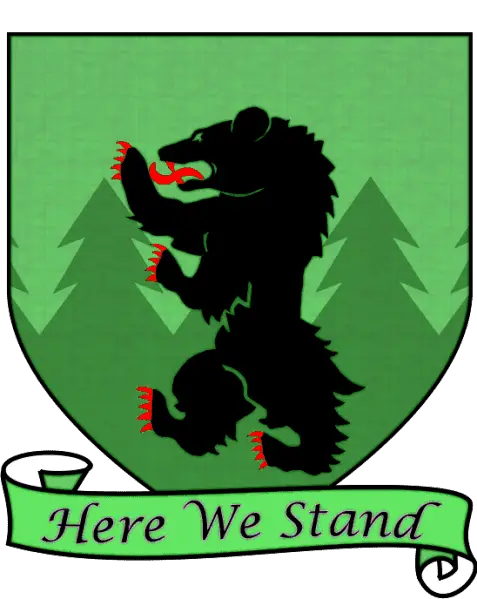 Unlike other houses on this list that saw infamy during the Dance of Dragons, much of House Mormont’s deeds stems from current events of A Song of Ice and Fire. While no doubt having some level of fame since they have wielded their valyrian sword, Longclaw, for centuries, the Mormonts were an otherwise smaller house. Granted Bear Island from King Rodrik Stark, they set their ancestral seat on the island in the Bay of Ice. However, Bear Island is very far north, very cold, and boasts few valuable resources.
Unlike other houses on this list that saw infamy during the Dance of Dragons, much of House Mormont’s deeds stems from current events of A Song of Ice and Fire. While no doubt having some level of fame since they have wielded their valyrian sword, Longclaw, for centuries, the Mormonts were an otherwise smaller house. Granted Bear Island from King Rodrik Stark, they set their ancestral seat on the island in the Bay of Ice. However, Bear Island is very far north, very cold, and boasts few valuable resources.
It would be far easier to think that House Manderly should claim this spot or even House Bolton. However, the Mormonts have several hands in several plot point pies that have shaped the entire saga of A Song of Ice and Fire.
Prior to A Game of Thrones, the former Lord of Bear Island, Jorah Mormont, fled his home in disgrace for Essos. Having married Lady Lynessa Hightower, he had bankrupted himself trying to keep her accustomed lifestyle and had resorted to selling criminals as slaves. When Lord Eddard Stark moved to apprehend him, he fled the continent and left Longclaw behind. Lady Maege Mormont took his place. Once in Essos, Lady Lynessa left him for the Magister of Lys and Jorah had to make his way as a sellsword. He eventually falls in with the exiled Targaryens, Viserys and Daenerys. While originally acting as a spy for Varys, Jorah falls in love with Daenerys and becomes loyal to her. Indeed, if he hadn’t intercepted the assassination attempt on Daenerys in A Game of Thrones, there would be no Dragon Queen, no dragons, and no hope of an eventual Targaryen reclamation.
His father, Jeor Mormont, had abdicated his seat so Jorah could become the acting Lord. Having joined the Night’s Watch, he eventually became Lord Commander and oversaw the beginning of Jon Snow’s journey as a Black Brother, gifting him Longclaw as a thank you when Jon saved his life from a wight. Jeor dies, but his impact on Jon Snow’s journey is undeniable.
Lady Maege Mormont pledged her forces to King Robb Stark, and lost her heir and eldest daughter, Lady Dacey Mormont, in the treachery of the Red Wedding. The Mormont women are forces to be reckoned with. Lady Dacey was described as being just as at home in armor as in courtly dress, and Lady Alysane is a renowned warrior in her own right. Currently, Lady Maege and two of her daughters, Lyra and Jorelle, are tracking down Lord Howland Reed and carrying Robb’s will. Lady Alysane has joined forces with King Stannis Baratheon and is scouring the western coast of the invading Ironborn. And Lady Maege’s youngest, Lyanna, is the acting ruler of Bear Island, having sent Stannis the now infamous response to his request that they bend the knee to him: Bear Island knows no king but the King of the North, whose name is STARK.
House Velaryon
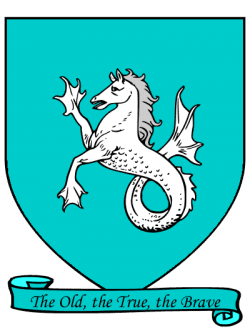 House Velaryon of Driftmark is the last (non-exiled) house of pure Valyrian descent in Westeros. Having migrated with the Targaryen dragonlords pre-Doom, they settled on Driftmark and built up their naval power. By the time of King Viserys I Targaryen, the Velaryons were at the height of their wealth and influence. Thanks to Lord Corlys Velaryon’s many sea voyages, the Velaryon’s became the most wealthy family in Westeros, even surpassing the Lannisters for a time. Their pure Valyrian blood had meant generations of intermarrying with their Targaryen monarchs. During King Viserys I’s reign, their power was so great that Prince Daemon Targaryen married into the family to shore up his standing after his older brother had an heir.
House Velaryon of Driftmark is the last (non-exiled) house of pure Valyrian descent in Westeros. Having migrated with the Targaryen dragonlords pre-Doom, they settled on Driftmark and built up their naval power. By the time of King Viserys I Targaryen, the Velaryons were at the height of their wealth and influence. Thanks to Lord Corlys Velaryon’s many sea voyages, the Velaryon’s became the most wealthy family in Westeros, even surpassing the Lannisters for a time. Their pure Valyrian blood had meant generations of intermarrying with their Targaryen monarchs. During King Viserys I’s reign, their power was so great that Prince Daemon Targaryen married into the family to shore up his standing after his older brother had an heir.
And, like the Hightowers, they were instrumental in the Dance of Dragons. Due to Queen Rhaenyra’s first marriage to Lord Corlys’ only true born son, Lord Laenor, her three sons Jacaerys, Lucerys, and Joffrey were the heirs apparent to the Iron Throne when their mother succeeded King Viserys I. However, it was an open secret that Lord Laenor’s sons, even while he recognized them as his, were actually born from Queen Rhaenyra’s affair with the knight, Ser Harwin Strong.
Nevertheless, when the Dance of Dragons started, the Velaryon’s sided with the Blacks and fought for Rhaenyra’s claim. At the end of the civil war, Lord Corlys’ eastern treasures were destroyed, the merchant town he’d built on Driftmark, Spicetown, had been razed, and many members of his house were dead.
Even though their power was diminished, Lord Corlys still clung on for some years as a regent to King Aegon III Targaryen (Queen Rhaenyra’s son through Prince Daemon) and was then succeeded by Lord Alyn Velaryon, the Oakenfist. Lord Alyn himself was a renowned sailor, and naval commander, serving ably during King Aegon III’s regency and reign.
While the Velaryon influence is now at its lowest under the Lannister/Baratheon regime, this family is still making waves. The Velaryon bastard Aurane Waters served under Queen Regent Cersei Lannister, stole the newly built royal fleet right out from under her nose, and rumor has it, has set himself up as pirate king of the Stepstones. All in a day’s work for the Lords of the Tides.


